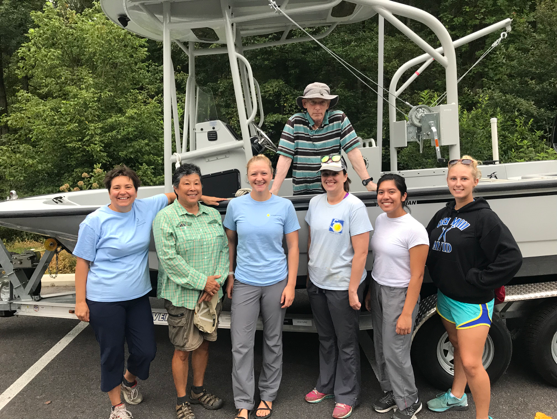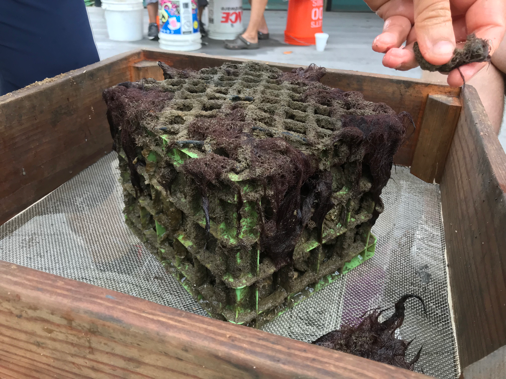Before I tell you about what I did this summer, let me ask you a question: have you heard of “Where’s Waldo”?
Okay, so for those of you who haven’ t, it’s a children’s book where you have to find this dude named Waldo in an image of a crowded scene.
The reason why I brought up Where’s Waldo is because trying to find him can be just as difficult to find as a white-fingered mud crab, which is native to the Chesapeake Bay and what I spent a lot of time working with this summer while I was interning at the Smithsonian Environmental Research Center.
The work I did for my independent project at SERC revolved around the Chesapeake Bay Parasite Project, which is a long-term study that takes population data on these mud crabs as well as various other organisms; the way that it works is that we take collectors filled with oyster shells and deploy them in various locations around the Chesapeake Bay and, after 2 months, retrieve, dump the contents onto a screen and place all the crabs into a bottle. And they can be very difficult to see, as they can range in size from the size of a bottle cap to as small as a tick. Also, it is important to note that there are a total of 72 of these collectors in five different estuaries, with 10 locations in each one, with one to two collectors at each location. Basically, what I’m trying to say is that there are a lot of crabs.
The only way we would be able to complete this every year in a timely manner is with volunteers, or as we like to call them, citizen scientists! We have people work in teams to collectively find and collect all the crabs. However, a big concern that comes to mind when working with volunteers is their data quality, which is a recurring and understandable concern. These data that the citizen scientists collect are used for real science research, so it is important that they do it systematically and thoroughly. Because of this, after each team is finished sorting, we have them switch screens and verify another team’s collector to find any missing crabs, which then becomes the original team’s error rate.
Thus, the main question that is often asked, and the question that I tried to answer with all this information, is whether different groups of people collect data differently. And to answer that question, we needed to have information on the people that participated in the project; since 2015, volunteers are asked to fill out a voluntary survey that gives information like the person’s age, level of education, profession and experience in this or related projects as well as an informed consent agreement that allows us to use that information in this study. With that information, the volunteers can then be appropriately grouped by their various demographics. I have since take that data and integrated it with the crab data to create a database using the programming language, R, to do statistical analysis on their data quality. Now that the database is complete, the actual analysis can begin; in the coming months, I will do this analysis to hopefully answer our main question and related questions of volunteer demographics and data quality.


